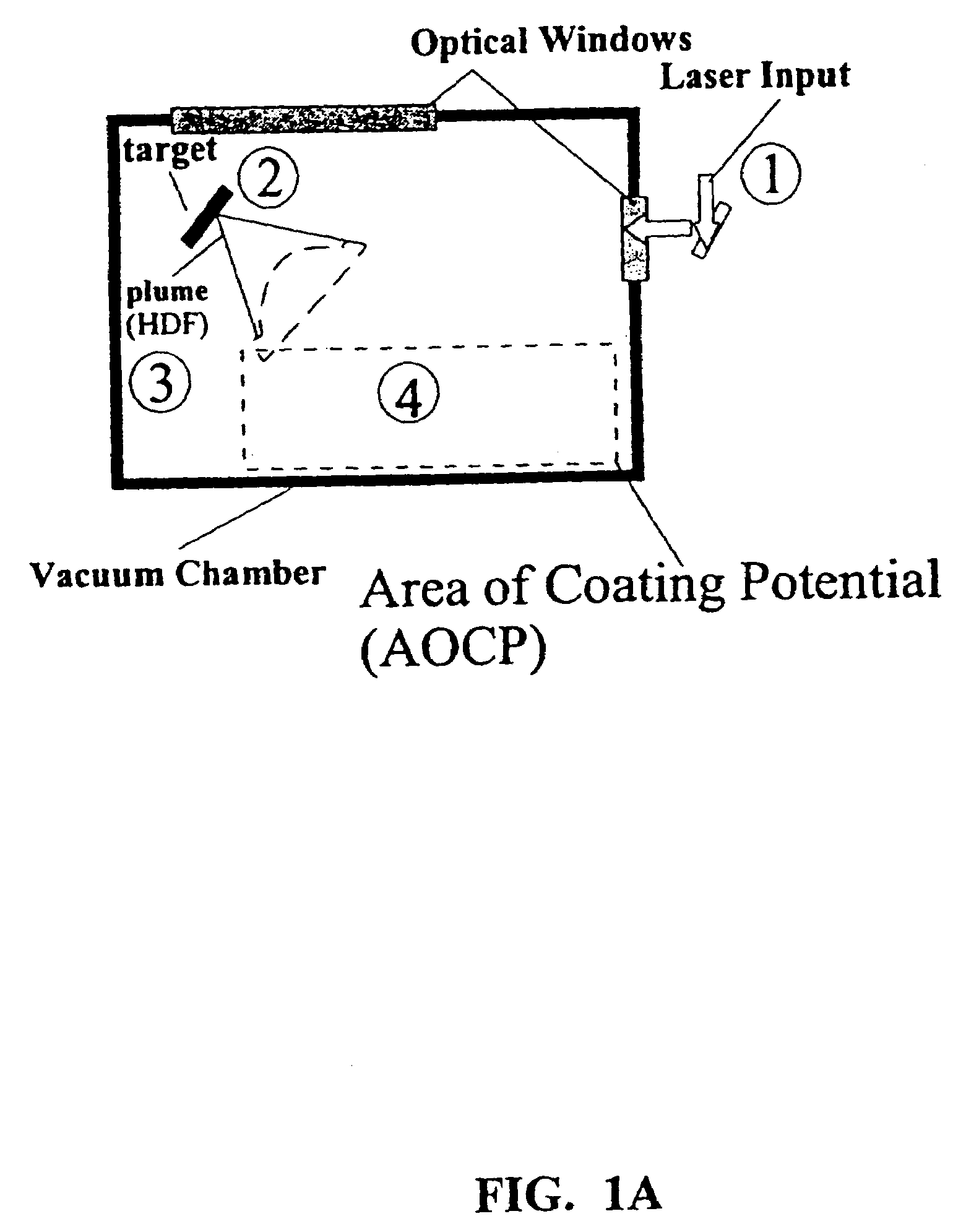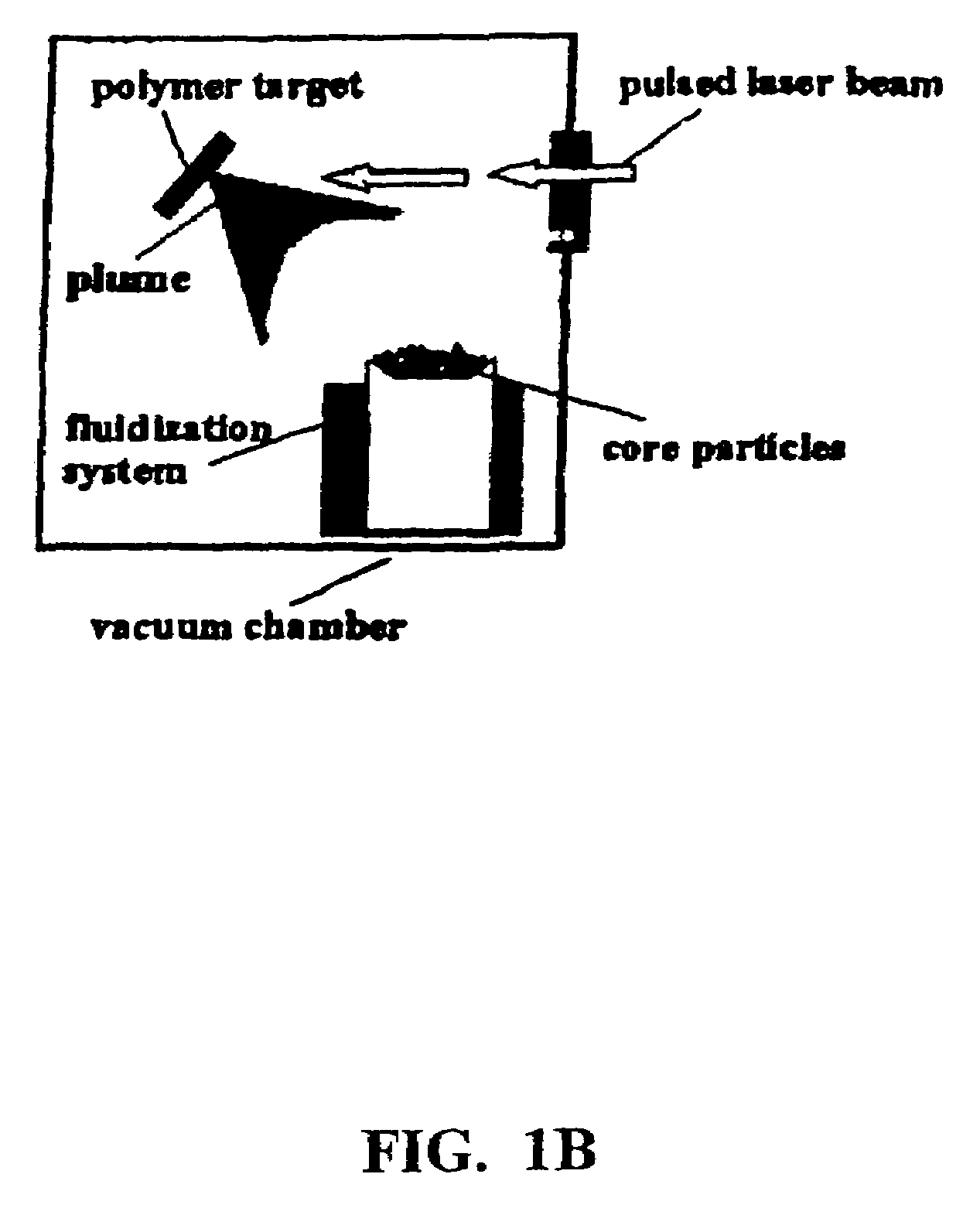Methods for preparing coated drug particles and pharmaceutical formulations thereof
a technology of drug particles and coatings, applied in the field of drug particles or drug delivery particles, can solve the problems of low encapsulation efficiency (1–10%), complex processing, and low efficiency of common solvent-evaporation techniques, and achieve the effects of improving bioavailability characteristics and improving pharmaceutical properties
- Summary
- Abstract
- Description
- Claims
- Application Information
AI Technical Summary
Benefits of technology
Problems solved by technology
Method used
Image
Examples
example 1
5.1 Example 1
[0145]Currently, dry powder inhalers (DPIs) are used to deliver various drugs to the lungs for localized or systemic delivery. Although current formulations and delivery systems are adequate for pulmonary drug therapy, they are limited by potential problems with pulmonary deposition characteristics as well as the residence time of the drug after inhalation (Hochhaus et al., 1997). Previously, liposomes were used as a model sustained release system with a substantial improvement in pulmonary targeting in rats (Suarez et al., 1998). Liposomes and microspheres have been investigated as sustained release delivery systems for the lung (Zeng et al., 1995; Edwards et al., 1997), but because of complicated manufacturing and wet processing, a novel dry coating technique previously developed for engineered particulates using pulsed laser deposition (PLD) is proposed (Fitz-Gerald, 1998). It is proposed that modification of the release rate of the drug from dry powders by applying ...
example 2
5.2 Example 2
[0154]Various coatings of poly(lactic-glycolic) acid (PLGA) were deposited onto mironized TA particles, another currently used anti-asthma drug, under similar coating conditions with PLGA, in order to test sustained-release dissolution profiles. The coatings were of nanometer 10 dimensions and extended release rate of the drug beyond 24 hours, as shown in FIG. 6.
[0155]The coated TA2 powder (coated at 2 hertz) reached 90% release at approximately 12 hours and the coated TA5 powder (coated at 5 hertz) reached 90% release beyond 24 hours. This was compared to uncoated micronized TA that reached 90% release at approximately 2 hours (FIG. 7).
[0156]Aerodynamic particle size of coated powders, using an Anderson Mark II Cascade Impactor, showed no statistically significant increase in particle size. In addition, although not statistically significant, the respirable fraction (stages 3 to 5) of coated TA showed an increased deposition compared to uncoated TA.
[0157]In vitro rat a...
example 3
5.3 Example 3
[0158]Mycobacterium tuberculosis (MTB) is the most prevalent infectious agent infecting one third of the world's population. Coinfection of tuberculosis (TB) and Human Immunodeficiency Virus (HIV) is present in a significant number of new TB cases. Particularly dangerous is the emergence of Multiple Drug Resistant (MDR) strains that increase the spread and chances of infection of this airborne microorganism. Therefore, the need exists for 30 developing drugs and pharmaceutical formulations that are more effective in localized treatment of the disease. This example describes the preparation of microencpsulated drug particles containing rifampicin, and their delivery to the lungs to specifically target alveolar macrophages, the host cells of this organism.
[0159]MTB bacilli are generally inhaled enter the alveolar macrophages via specific binding followed by internalization (Fenton, 1996). From the lungs the microorganism is transmitted to other organs through the blood su...
PUM
| Property | Measurement | Unit |
|---|---|---|
| thickness | aaaaa | aaaaa |
| thickness | aaaaa | aaaaa |
| diameter | aaaaa | aaaaa |
Abstract
Description
Claims
Application Information
 Login to View More
Login to View More - R&D
- Intellectual Property
- Life Sciences
- Materials
- Tech Scout
- Unparalleled Data Quality
- Higher Quality Content
- 60% Fewer Hallucinations
Browse by: Latest US Patents, China's latest patents, Technical Efficacy Thesaurus, Application Domain, Technology Topic, Popular Technical Reports.
© 2025 PatSnap. All rights reserved.Legal|Privacy policy|Modern Slavery Act Transparency Statement|Sitemap|About US| Contact US: help@patsnap.com



